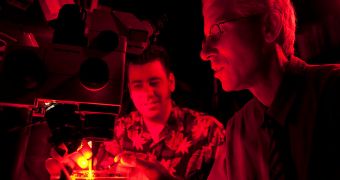Scientists at Brown University say that life forms capable of sight – which include fish, birds, reptiles, mammals and so on – do not have brains that are innately hardwired to see. Rather, gaining sight is an active process that relies heavily on light itself.
In order to demonstrate this, the researchers conducted two investigations, utilizing different research techniques, and on different species. They were able to indicate that the first light creatures see plays a tremendously important role in sight.
It's this light that contributes a great deal to refining the complex circuitry brains use to process visual information. In essence, light organisms are exposed to early on helps them wire up or construct their central vision system.
When infants – human or otherwise – are born, their genes only provide a rough approximation of how their vision circuitry will look like. There is no other way for the latter to improve, except if doing actual work, which is impossible in the womb or egg.
In the recent studies, the Brown team studied how mouse pups and tadpoles gain their sight, and discovered that exposure to light caused the main difference in efficiency and neural differentiation.
“Through a combination of light-independent and light-dependent processes, the visual system is getting tuned up over time,” explains David Berson, a professor of neuroscience at the university.
The first study, which Berson conducted, was carried out on newborn mice. It details how the animals organize nerve endings belonging to the left and right eye, in an area of the cortex where the differentiation between the two sides is mixed up at birth.
In the paper, which was published in the June 5 advanced online issue of the top journal Nature Neuroscience, the expert and his team say that light helps boost the innate organizational processes that take place in this area of the brain.
In the second study, which was conducted by Brown assistant professor of neuroscience Carlos Aizenman on newborn tadpoles, it was shown that exposure to light can coordinate and improve the response speed, strength and reliability of a neural grid inside the visual-processing areas of their brains.
“This is how activity is allowing visual circuits to refine and sort themselves out. Activity is fine-tuning all these connections. It’s making the circuit function in a much more efficient, synchronous way,” Aizenman explains.
The two new studies were funded by the US National Institutes of Health (NIH), the National Science Foundation (NSF), the NIH National Eye Institute (NEI) and the Whitehall Foundation.

 14 DAY TRIAL //
14 DAY TRIAL //